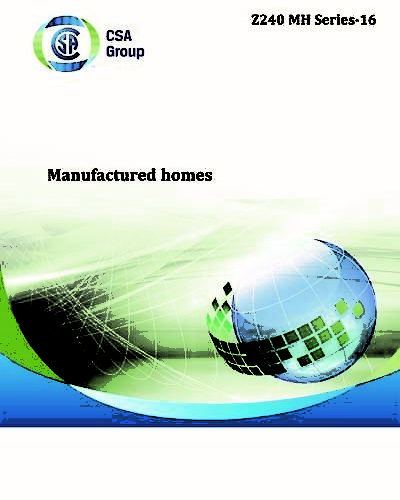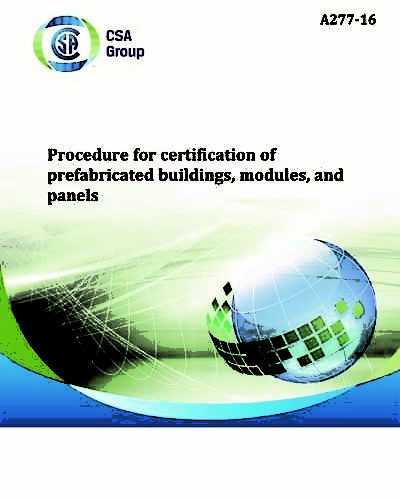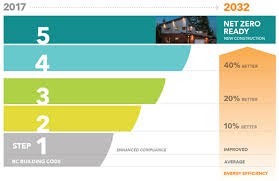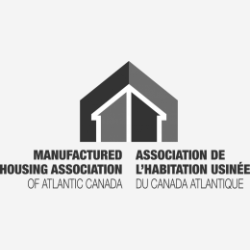Manufactured and modular homes (coming under the umbrella term “factory-built housing”) are vastly different from the original mobile homes or trailers built in an era when these units came with wheels and axles. These homes were expected to have short-spans and moved frequently. Today’s homes do not include wheels, will probably not be moved following the original set-up and comply with modern codes and standards incorporating the latest construction practices and materials. This article is intended to explain how factory-built homes are becoming more energy efficient and reducing environmental impacts. This will be achieved through the industry’s own motivation and working in concert with the direction set by our respective governments. “Greenstreaming” is a term reflecting where our home construction practices are headed.
Governments across Canada, at both the federal and provincial levels, have been on a track towards the continual improvement in energy efficiency. This is in keeping with the federal government’s Pan-Canadian Framework on Clean Growth and Climate. A key goal of the strategy is to mandate Net-Zero Energy buildings. Net Zero is defined as buildings that produce as much clean energy as they consume.
In Canada, the National Research Council is responsible for developing the National Model Building Code. The NMBC is intended to guide the formulation of provincial building codes; respective provinces are able to adopt it, in whole or in part. A key component of the National Model Building Code is Part 9.36 which lays out requirements for improving energy efficiency.
In British Columbia, the Building Code is updated on a 6 to 7-year basis; the most recent update came into effect in 2018. The previous update was put in place in 2012.
Commencing with the 2012 update, BC began moving towards adoption of Part 9.36. From 2012 to 2018 (the date of the latest update), BC established transitional provisions that brought into force the majority, but not all, elements of the NMBC 9.36.
With the 2018 update, the province moved to full implementation of Part 9.36. In concert with this, BC developed a strategy to establish energy-efficiency targets with a goal of achieving Net-Zero Ready New Construction by 2032. The strategy was implemented in 2017 and termed BC’s Energy Step Code. The Step Code became enforceable commencing on December 15, 2017.
The Step Code is a new provincial standard that provides an incremental and consistent approach to achieve energy-efficient construction. The Step Code requires buildings to demonstrate energy efficiency code compliance through building energy modeling.
In summary, the Step Code provides five steps providing direction on the requirements to meet the individual steps. Individual communities can implement their own timelines for adoption of the individual steps and many are already moving to require the upper stages of the Step Code. Interested readers may access more information by Googling the BC Energy Step Code.
How do these recent advancements influence energy efficiency for factory built homes and benefits to the purchaser?
The factory-built housing industry utiltilzes two key construction standards for full-time occupany homes which the responsibility of our Canadian Standards Association:
1. CSA Z240MH (Manufactured Home) are homes built on steel frames. The initial standard was created circa 1972 and were termed mobile homes or trailers as they included wheels and axles; they no longer do.
The Z240MH standard is a stand alone building code which guides construction practices from frame-welding standards to required construction materials to ventilation requirements. This standard was last republished in 2016 in keeping with the continual improvement requirements of CSA. While the updated standard materially complies with the 2018 BC Building Code requirements, there are some minor allowances on window, door and skylight standards towards ensuring greater affordability of manufactured homes.
2. CSA A277 (Modular Home) is a plant standard requiring that all homes built in the respective plant are constructed in compliance with the BC building code in place when construciton of the home commences. While A277 homes are generally constructed with the expectation they will be placed on perimeter cement foundations similiar to standard site-built homes, they can also be constructed on steel frames similar to the requirements set out in the Z240MH standard. Also, similiar to Z240MH, A277 was last republished in 2016.


The factory-built housing industry fully supports the government’s objectives to improve energy efficiency for BC homes. The industry has engaged energy-effiiciency modelling resources and is undertaking the testing of homes being constructed. A key test is known as the blower door test which is intended to assess air tightness of the homes. Preliminary results indicate factory-built homes are already meeting upper stages of the Step Code. Our homes will not have major challenges in meeting the Step Code demands and local government Step Code implementation timing directives.
For the purchaser, manufactured and modular homers have smaller “foot prints” with the majority of homes in the 1500 to 2000 square feet range which is less than typical site-built homes. The smaller size automatically results in lower energy demands especially related to heating requirements and associated costs.
In the construction of manufactured and modular homes, owing to the efficiencies of the plant and transportation practices, there is substantial decrease in energy demands. This is due to having centralized plants and bringing the materials to the respective plants. Further, moving the home to the final location provides for more energy efficient transport rather than having muiltiple vehicles delivering numerious loads of materials onto a construction site. Further, as carbon creation is becoming a major environmental issue, the lower energy demands and greater utilization of construction materials, results in less carbon formation. On-going research into these criteria consistently verifies these savings.
Reductions in on-site construction time is also a major benefit. Many communities are becoming proponents of factory-built housing as the actual on-site construction time is so much less. These result in less inconvenience for adjacent homeowners in the more dense communities. Further, the avoidance of having construction personnel having to travel to the site on a daily basis for multiple months substantially decreases energy demands and carbon creation associated with personal vehicle usage.
The factory-built housing industry is committed to energy efficiency. This is reflected is the continual improvement of construction standards and adoption of evolving technologies. The industry will continue to increase our market share of homes to BC purchasers because of the construction convenience, greater energy efficiency, lower carbon creation and optimal use of construction materials.
-END-












